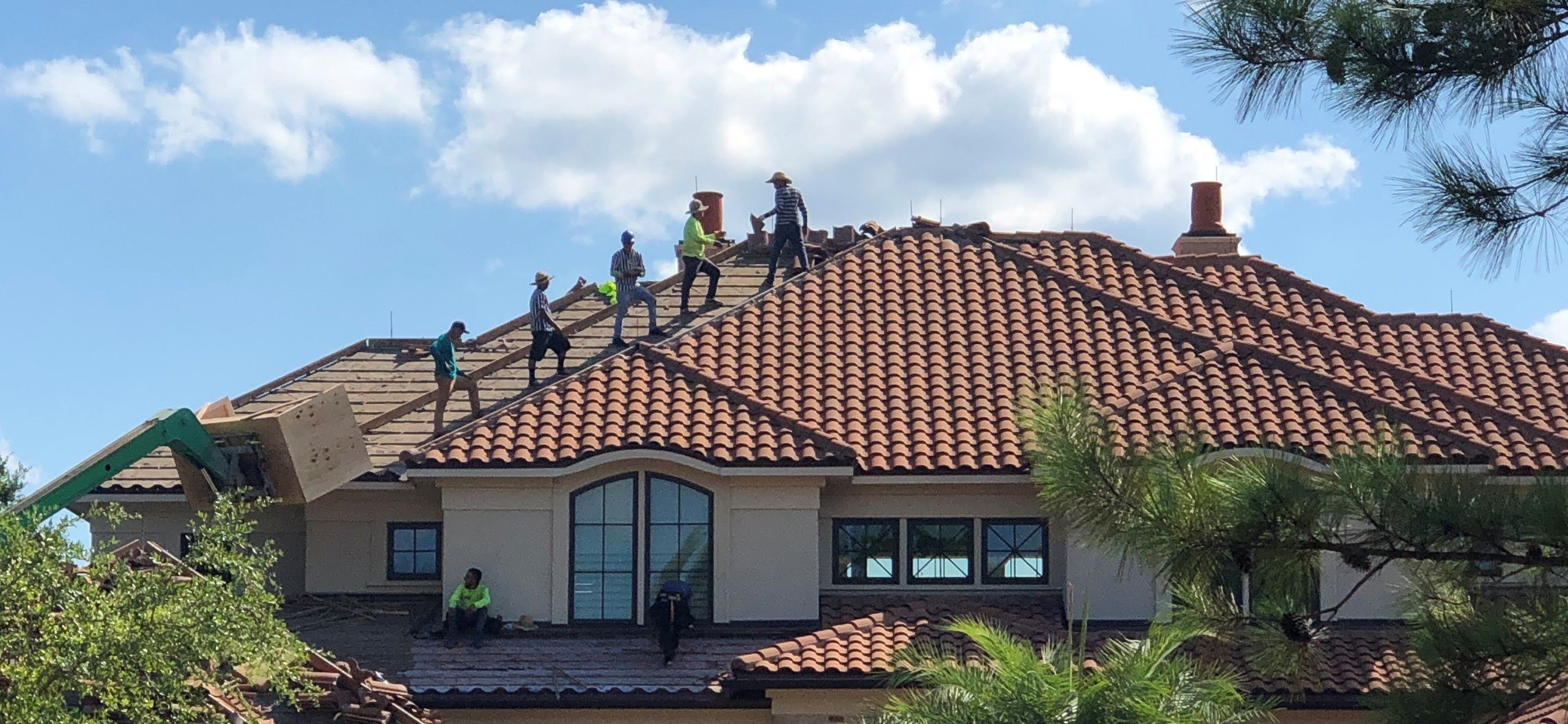Individual Testimonies on the most effective Gainesville FL Roofing Companies Readily Available
Individual Testimonies on the most effective Gainesville FL Roofing Companies Readily Available
Blog Article
Finest Practices for Ensuring Appropriate Roof Ventilation
A balanced intake and exhaust air vent proportion, frequently 1:300, plays a crucial role, with consumption vents preferably placed at the lower side of the roofing for awesome air access and exhaust vents at the optimal for warm air exit. Keeping insulation away from vents is important to protect against airflow restriction.
Understand Ventilation Fundamentals
Effectively recognizing air flow basics is vital for guaranteeing the durability and performance of roof. Efficient air flow minimizes dampness build-up and temperature level extremes in the attic room, both of which can bring about considerable architectural damages with time. A well-ventilated roofing aids in preventing common issues such as mold and mildew growth, wood rot, and ice dams, which can compromise the honesty of the roof products and the underlying structures.
The primary goal of air flow is to help with the movement of air, enabling for a regular exchange between the interior and exterior settings. This equilibrium is achieved with a combination of intake and exhaust vents that collaborate to preserve ideal airflow. Consumption vents, generally situated along the eaves or soffits, allow fresh air to enter the attic room space, while exhaust vents, frequently positioned at or near the roofing ridge, allow hot, damp air to run away.
Secret aspects influencing the efficiency of roof air flow include correct positioning, appropriate sizing, and making certain that both consumption and exhaust vents are unblocked. Regular examination and maintenance are essential to recognize prospective blockages, damages, or ineffectiveness in the ventilation system, therefore guarding the roofing's performance and durability.
Kinds of Roofing Vents
Roof covering vents play a crucial duty in maintaining efficient attic air flow and, by extension, the overall health of the roof system. Numerous kinds of roof vents are offered, each with distinct advantages tailored to certain roofing demands.

Soffit vents are set up under the eaves and operate in tandem with roofing vents to make certain a balanced consumption and exhaust system. By allowing cooler air to get in from below, soffit vents help with the expulsion of warm air via upper vents. Gable vents, situated on the outside wall surfaces of the attic room, offer one more effective remedy, particularly in homes with saddleback roofs.
Assess Your Present Air Flow

Next, think about the age and condition of your roof covering products and ventilation parts. Older systems may not comply with present building codes or might have degraded over time, minimizing their efficiency. Conduct a detailed examination to determine any indicators of damage, such as rust, damages, or voids that could jeopardize the system's efficiency.
Furthermore, determine the attic room temperature level and moisture degrees. High temperatures and humidity can indicate inadequate air flow.
Installation Best Practices
Effective installment of roofing air flow systems is paramount for making certain optimum performance and long life. Correct installation starts with comprehending the specific air flow needs of the roofing and the building it covers. This involves calculating the right proportion of intake to tire vents, commonly adhering to the 1:300 regulation, which states one square foot of ventilation for each 300 square feet of attic floor space.

The positioning of vents is similarly essential. Intake vents need to be set up at the roofing system's reduced hop over to these guys side, often in the soffits, to enable awesome air to get in. Exhaust vents, on the other hand, ought to be set up near or at the roofing's top to assist in the exit of warm, moist air. This produces a natural air flow that assists preserve temperature level and wetness equilibrium within the attic room room.
Seal all vent links thoroughly to avoid air leaks and possible water seepage. Usage high-grade materials and comply with maker standards to make sure resilience and efficiency. Furthermore, integrating ridge vents with baffles can considerably boost air flow effectiveness by stopping wind-driven rainfall and snow from going into the attic room.
Inevitably, i was reading this specific installment of roof covering ventilation systems alleviates potential problems such as mold development, ice dams, and structural damages, ensuring the roof covering's stability and the building's overall health.
Regular Maintenance Tips
Consistency in maintenance methods is fundamental to guaranteeing the long-lasting performance of roof ventilation systems. Throughout these evaluations, ensure that vents are cost-free of particles, nests, and other obstructions that can hamper air movement.
Cleansing the vents is another necessary job. Use a soft brush or a vacuum to remove dust and debris from intake and exhaust vents. Beware not to harm the air vent screens or louvers during the procedure. In addition, inspect the attic space for any type of indicators of water damages, which might endanger the stability of the roof covering system.
Appropriate insulation is just as vital. Make sure that attic room insulation does not block the vents, as this can seriously restrict airflow. If any insulation has changed or worked out, rearrange or change it to keep an effective barrier.
Last but not least, change official source any kind of harmed or missing out on parts promptly. Busted vents, fractured shingles, or scrubby blinking can all add to poor ventilation and must be resolved right away. Routine upkeep guarantees that the roof covering air flow system operates efficiently, therefore expanding the life expectancy of the roofing itself.
Verdict
Making certain proper roof covering air flow is critical for keeping the efficiency and longevity of a roof system. Adherence to the 1:300 intake and exhaust vent ratio, paired with the strategic placement of vents, is essential.
A balanced intake and exhaust air vent proportion, typically 1:300, plays a pivotal role, with intake vents ideally put at the reduced side of the roof for awesome air entry and exhaust vents at the peak for warm air departure. Consumption vents, commonly located along the soffits or eaves, allow fresh air to get in the attic room room, while exhaust vents, commonly located at or near the roof ridge, allow warm, moist air to run away.
Soffit vents are installed under the eaves and job in tandem with roofing system vents to guarantee a well balanced consumption and exhaust system. By enabling cooler air to get in from below, soffit vents facilitate the expulsion of hot air through upper vents. Adherence to the 1:300 consumption and exhaust air vent ratio, combined with the tactical placement of vents, is necessary.
Report this page